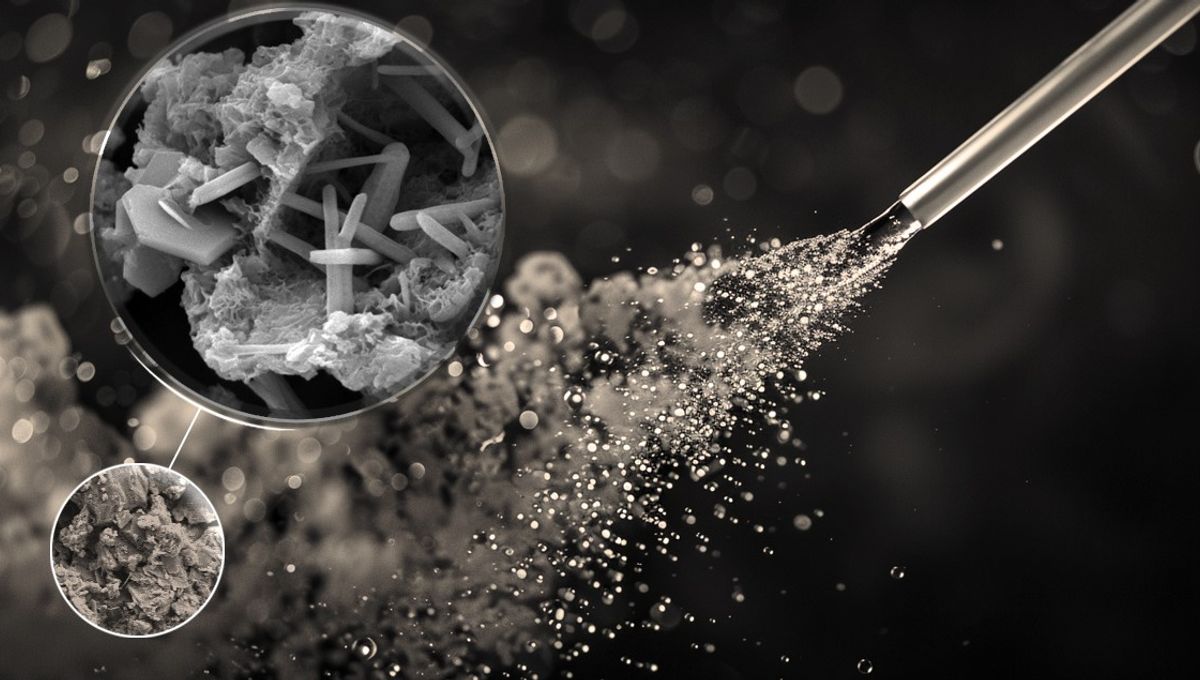
Engineers at Northwestern University have found a new concrete manufacturing process that stores carbon dioxide (CO2) from the atmosphere by using a carbonated solution. The concrete is just as strong and durable as traditional versions and is easy to make.
When it comes to types of water – still or carbonated – you probably think about the options offered by a waiter in a restaurant. However, these two options also play a role in the construction industry.
Traditionally, concrete is made through a mix of cement and water, which makes a paste. This paste is then mixed with aggregates in the form of sand and gravel. As these ingredients mix, they harden and bind with the aggregate to create the solid mass that we use in construction.
However, this is not a green industry. The ordinary production of Portland cement, the most common type, is a massive contributor to CO2 emissions. In fact, the global production of cement is the third-largest source of anthropogenic carbon emissions (8 percent), only behind fossil fuels and land-use change.
But there are alternative options. In fact, carbonated concrete has a high potential to store CO2 because of its inherent alkalinity, which can turn the greenhouse gas into solid crystals consisting of mostly calcium carbonate (CaCO3). These crystals have a longer lifespan than structures made of cement, so they represent an ideal way to store CO2.
The idea of using this solution was first posited in the 1970s but received limited attention until recent years.
The process of storing CO2 in such a way comes in two forms: hardened concrete carbonation or fresh concrete carbonation. In the former, solid concrete blocks are injected with CO2 gas at high pressures, and in the latter process, the gas is injected into the mixture when water, cement, and aggregates are combined.
However, the techniques for achieving these processes have their limitations. They have both had low carbon capture efficiency despite how often they are used, and the process also weakens the concrete. That is, until now.
In laboratory experiments, Northwestern University engineers achieved a CO2 sequestration efficiency of up to 45 percent. This means that nearly half of the CO2 injected into the concrete during manufacturing was both captured and stored.
“The cement and concrete industries significantly contribute to human-caused CO2 emissions,” said Northwestern’s Alessandro Rotta Loria, who led the study detailing the solution, in a statement.
“We are trying to develop approaches that lower CO2 emissions associated with those industries and, eventually, could turn cement and concrete into massive ‘carbon sinks.’ We are not there yet, but we now have a new method to reuse some of the CO2 emitted as a result of concrete manufacturing in this very same material. And our solution is so simple technologically that it should be relatively easy for industry to implement.”
So how did they do it? In their approach, the engineers used the fresh concrete process but, rather than injecting the gas into the mix at the same time, they injected it into the water alone with a small amount of powder. By adding this carbonated suspension to the rest of the ingredients, they had created a concrete that absorbed CO2 during its manufacturing.
“The cement suspension carbonated in our approach is a much lower viscosity fluid compared to the mix of water, cement and aggregates that is customarily employed in present approaches to carbonate fresh concrete,” Rotta Loria added.
“So, we can mix it very quickly and leverage a very fast kinetics of the chemical reactions that result in calcium carbonate minerals. The result is a concrete product with a significant concentration of calcium carbonate minerals compared to when CO2 is injected into the fresh concrete mix.”
If this wasn’t an achievement in itself, further analysis showed that the new concrete could rival the strength and durability of regular concrete.
“A typical limitation of carbonation approaches is that strength is often affected by the chemical reactions,” said Rotta Loria. “But, based on our experiments, we show the strength might actually be even higher. We still need to test this further, but, at the very least, we can say that it’s uncompromised. Because the strength is unchanged, the applications also don’t change. It could be used in beams, slabs, columns, foundations — everything we currently use concrete for.”
“The findings of this research underline that although carbonation of cement-based materials is a well-known reaction, there is still room to further optimize the CO2 uptake through better understanding of the mechanisms tied to materials processing,” study co-author Davide Zampini concluded.
The study is published in Nature.
Source Link: New Carbonated Concrete Can Store CO2 While Still Being Strong